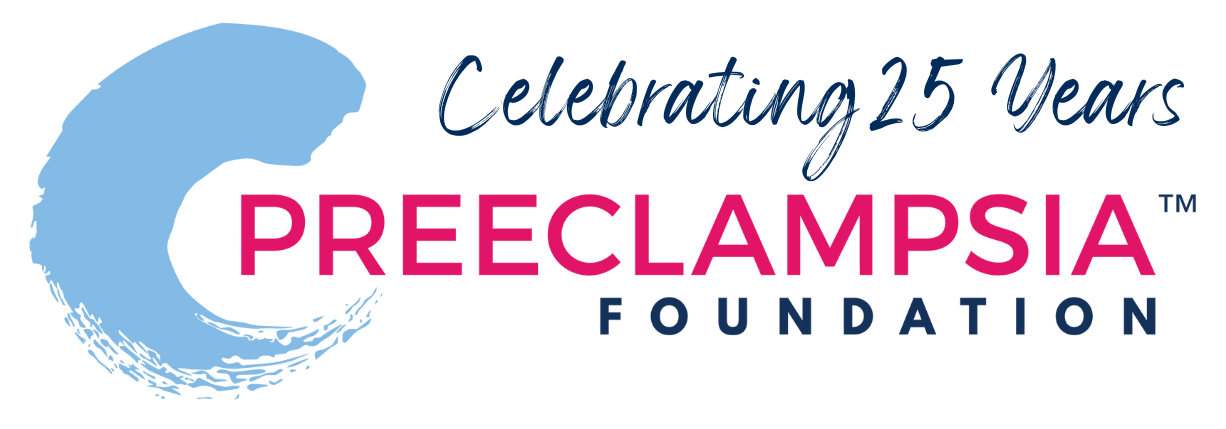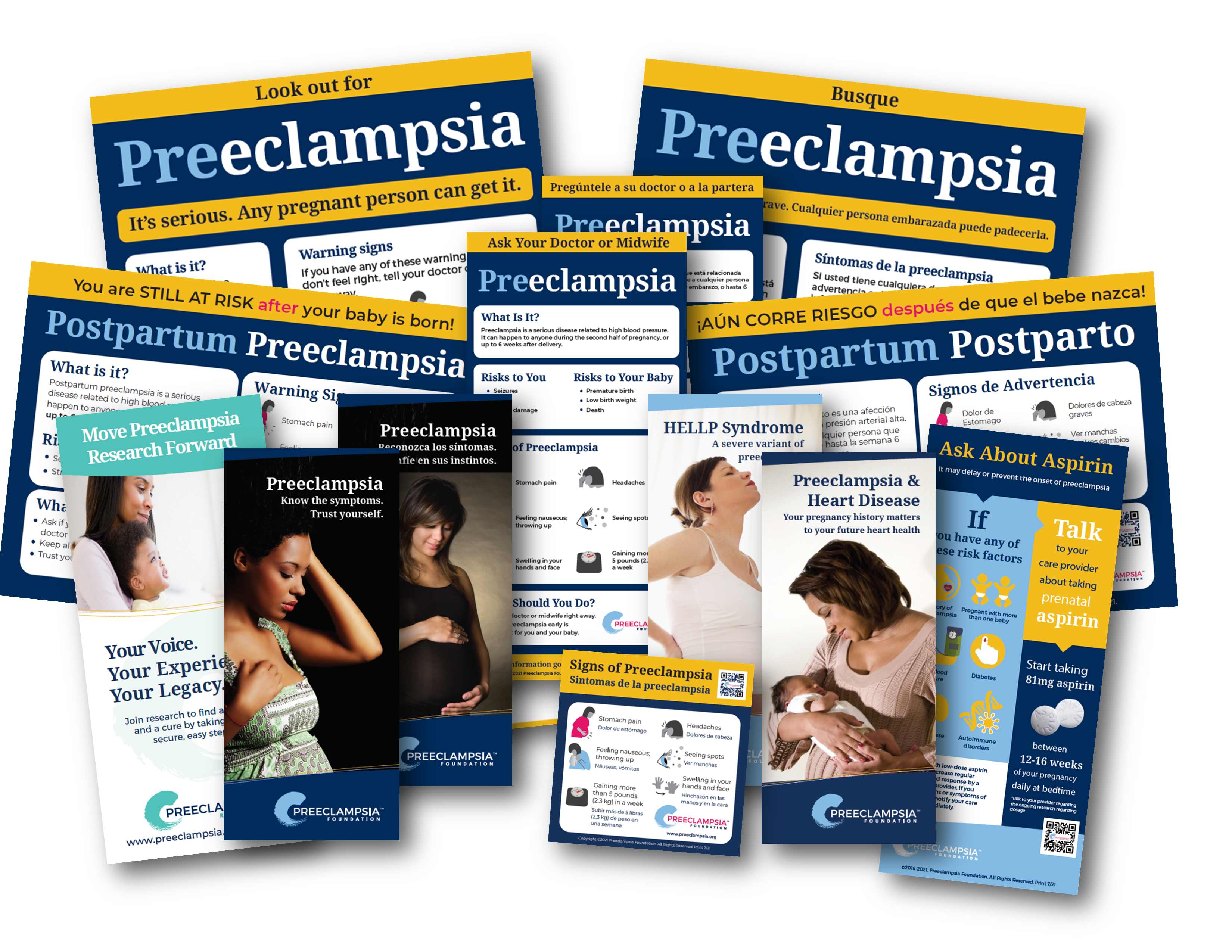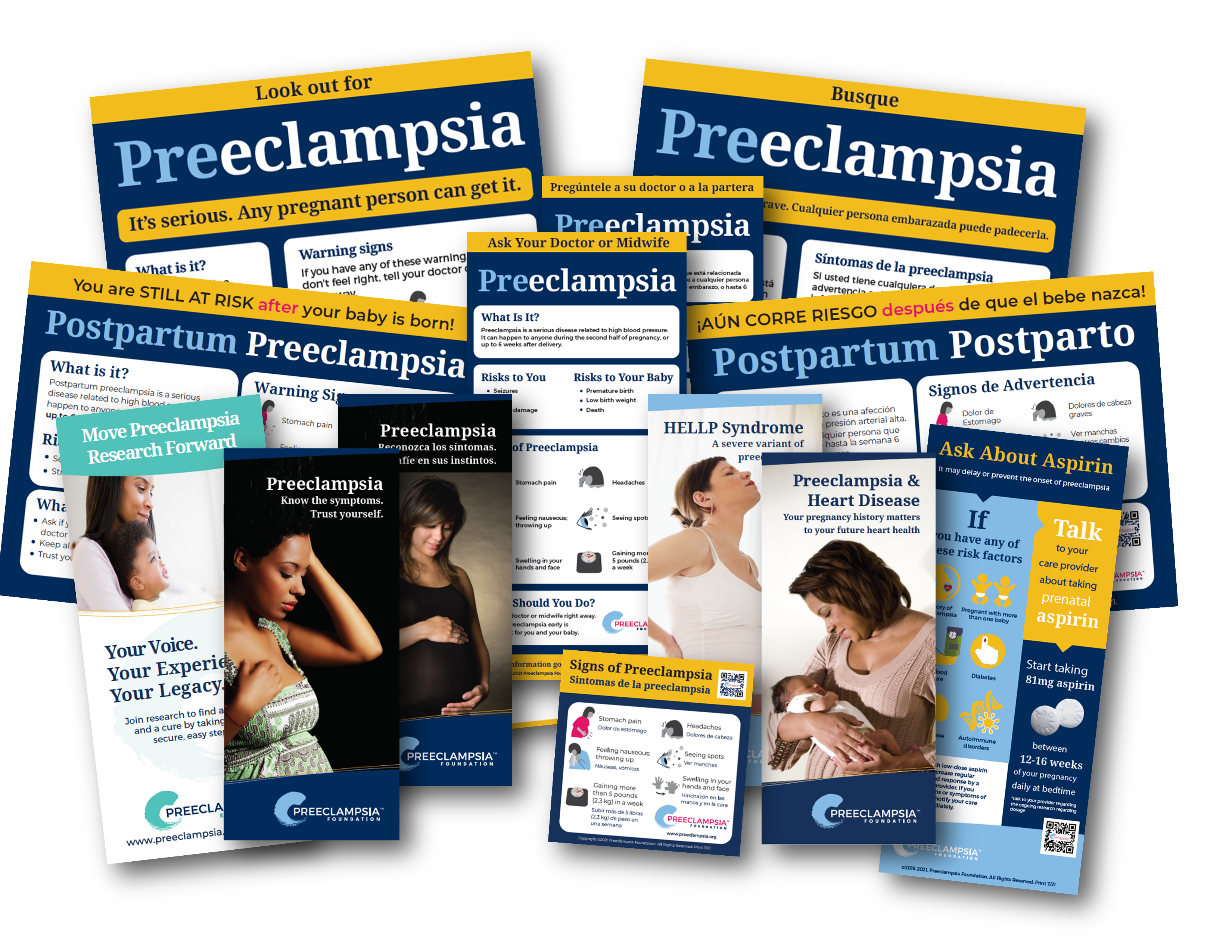
Educating Patients
Last Updated on March 20, 2023
RECOGNITION & RESPONSE IS CRITICAL
Less than half of pregnant women know the signs and symptoms of preeclampsia. And still others may not share their symptoms with their healthcare providers for fear of over-reacting.
The Preeclampsia Foundation is working to improve the resources available to all women and their caregivers by providing evidence based educational materials in our Store. We also encourage providers to recommend the trustworthy information on our website to all their patients.
Patient Education: Does it Really Matter?
Educating patients is the first line of defense when it comes to proper recognition and reporting of symptoms. Preeclampsia can be a rapidly progressing disorder with symptoms becoming more and more critical in a short window of time between regular prenatal appointments. The patient is often the first responder. With greater understanding of the seriousness of preeclampsia, comes greater compliance and reporting. But just telling patients about preeclampsia is not enough.
Pregnant patients have a generally poor understanding of preeclampsia, although improved understanding is associated with having received information from their provider. Here are some things to consider when educating your patients.
Lay Terms - Don't assume what she needs to know. Use plain language. Say high blood pressure rather than hypertension.
Be Clear - Make sure she knows the symptoms and exactly what to do if she experiences any of them.
Assess Her Understanding - Rather than asking, "Do you have any symptoms to report?' try "Have you experienced any changes in your eye sight? Have you had any really bad headaches that won't go away, even with medication?" Ask her what she would do if she did experience any of those symptoms. Is she supposed to call the nurse's line or head directly to labor and delivery? Make sure she knows.
When women know how to recognize the signs and symptoms, and they understand the explanations offered, they are not only more likely to report symptoms but they are also more likely to comply with prescribed treatments. This has a direct impact on reducing adverse outomes.
There is also research to suggest that patient education also increases provider education. When a provider is consistently explaining signs and symptoms, they are more likely to respond appropriately when a woman follows advice and reports her symptoms.
Timing of Prenatal Education
15-20 weeks
- Provide printed materials (low lit, tear off pad)
- Assess patient health literacy. Does she understand?
20 weeks+
- Review warning signs OFTEN for women considered at risk, occasionally for women at low risk.
- Check for understanding. "Have you experienced...?"
- Check proper behavior response. "What would you do if you experienced...?"
- Take home reminders, hardcopy materials
Outpatient management
- Extra vigilance to ensure patient knows all warning signs and does not hesitate to make contact immediately
- Consider geography and length of travel time to care
Chunk and Check
What is it?
- Definition of preelampsia in layman’s terms
- “Preeclampsia is a serious disease related to high blood pressure. It can happen to any pregnant woman.” Why should you care?
Why should you care?
- Explanation of risks to mother and baby, emphasizing seriousness of responding in timely manner
- “There are risks to you – seizures, stroke, organ damage or death; and your baby – premature birth or death.”
What should you pay attention to?
- “Symptoms include…”
What should you do?
- “If you experience any concerning symptoms call your doctor or midwife right away. Finding preeclampsia early is important for you and your baby.”
Please don't tell your patients not to use Google (there is no avoiding women searching online for immediate answers). Rather give them reputable sources to access. List these website in your patient portal or on your website.
Finally, Don't forget about postpartum education. 75% of preeclampsia related deaths happen in the postpartum period. Make sure women who are at risk for preeclampsia understand that delivery is NOT the cure for preeclampsia and that they need to remain vigilant, even after they have their baby. Consider scheduling a follow up appointment within the first week after birth for these patients.
Our patient education materials are evidence based to get women's attention and promote understanding of preeclampsia. Options include:
- "Ask About Aspirin" Rack Card (English/Spanish)
- "About Preeclampsia" frequently asked questions brochure (English/Spanish)
- "Preeclampsia and Heart Disease" brochure (English)
- "HELLP syndrome" brochure (English)
- Illustrated Signs & Symptoms tearpad (English, Spanish, French, Haitian Creole, Arabic*, Burmese*, Kirundi*, Pashto*, Somali*, Swahili*, Ukrainian*)
- Illustrated Signs & Symptoms 12"x18" poster (English or Spanish)
- Illustrated Signs & Symptoms 3" magnet (English/Spanish)
- "Still at Risk" postpartum preeclampsia tearpads (English, Spanish, French, Haitian Creole, Arabic*, Burmese*, Kirundi*, Pashto*, Somali*, Swahili*, Ukrainian*)
- "Still at Risk" postpartum preeclampsia 12"x18" posters (English or Spanish)
- "Move Preeclampsia Research Forward" Preeclampsia Registry Rack Cards (English only)
- "How to Take Your Blood Pressure" instructions and blood pressure monitoring sheet* (English, Spanish, French, Haitian Creole, Arabic*, Burmese*, Kirundi*, Pashto*, Somali*, Swahili*, Ukrainian*)
*Digital licensing version only.
Related Articles

It's time to pull out your boots and hats and CELEBRATE YOU! Join us for "Saddle Up For A Healthy Pregnancy: Protecting Black Motherhood Brunch" Gathering Table, and party with a purpose as we gather...

It's time to pull out your spring floral dresses and CELEBRATE YOU! Join us for "Advocacy in Bloom," and party with a purpose as we gather around the table to raise awareness, build connections, and...
1742221235.png)
It's time to get dressed in your purple and peach and CELEBRATE YOU! Join us for the "Purple Peach Party: Connecting Sisters, Sharing Our Stories" soiree as we gather around the table to raise awaren...
_41721308753.jpg)
It's time to slip on your sundresses and CELEBRATE YOU! Join us at a Sunset Soiree as we gather around the table to raise awareness, build connections, and empower one another on our journey to Black...

Our advocacy objectives are centered on providing patient support and education, raising public awareness, increasing research investment, and improving healthcare practices and quality.


